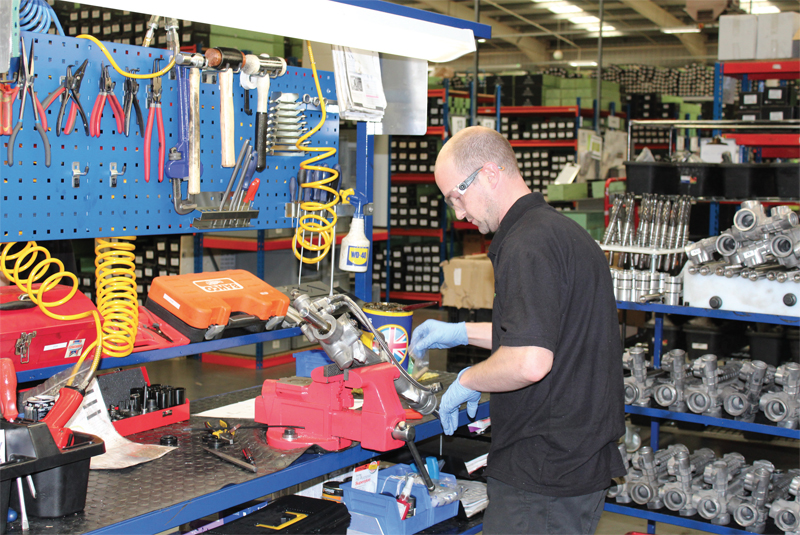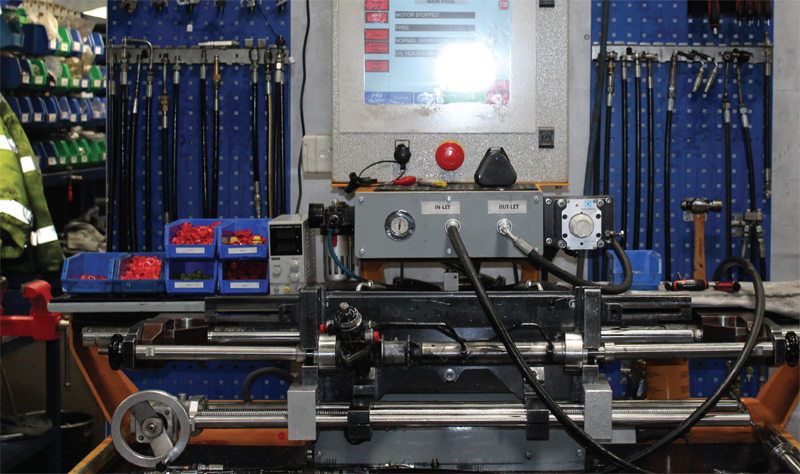
With Electric Power Steering (EPS) edging its way into the aftermarket, Shaftec’s Area Sales Manager, Joe Toakley, discusses the process involved in remanufacturing an electric power steering rack.
Electric Power Steering (EPS) is now pretty much standard in the vehicles rolling off the production lines. In line with industry trends, this makes perfect sense, as the components are lighter in weight, more durable, require less maintenance, give a better response at different speeds, and require less fuel consumption. Remanufacturing, in reducing emissions and energy use, and reusing existing materials, has an excellent impact on the environment. Remanufactured parts generally carry the same warranties as OEM parts, and VMs are becoming increasingly aware of the opportunities provided by remanufacturing to extend service life agreements and provide cost-effective solutions for older vehicles.
As EPS parts filter through into the aftermarket, it makes sense for motor factors to know how EPS functions, as well as the remanufacturing process and the subsequent reprogramming of such electrical parts. In doing so, it will enable them to answer customer questions and pass on advice regarding suppliers.

Remanufacturing an EPS rack
1. The core enters at goods in and is checked by bar code label on the box to ensure it’s the correct part number, and then checked for remanufacturing suitability. If it passes, it goes into core reserves ready to be remanufactured.
2. All electrical components are dismantled on the rack. The unit is degreased and thoroughly cleaned.
3. The casting is shot blasted to remove any lingering debris.
4. As Shaftec doesn’t batch test, every individual unit and casting is then inspected before being assembled by hand. All accessories, such as the seals, are brand new. In fact, the seals are often over-engineered due to improvements made since the original unit was released.
5. The unit then enters the ‘clean room’, which is an enclosed unit specifically for the delicate process of remanufacturing the electric motors. All units are virginalised, and any physical repairs required, such as to the circuitry, are carried out.
6. The steering rack is fully tested on a dedicated EPS testing rig to exceed VM requirements using real-world testing procedures. Again, every single rack is tested.
7. The rack is boxed inside packaging of a robust design. There’s also a cradle within the box to ensure the unit is as secure and protected as possible. Tamper seals are placed on all electrical connectors so the customer knows that it has not been fitted previously since remanufacture, as this can cause catastrophic programing errors.
Shaftec Director Tom Curtis also weighed in, explaining: “At Shaftec, we recognised the growth opportunities of EPS very early on, and knew that to remain competitive and secure growth, we had to develop in line with this and invest back into the business.
“Return on machinery investment has been impressive,” he continued. “It’s improved efficiency and has had a positive effect on production times, and consequently availability and sales. Some good examples are the technowash and shot blasting machine which have, in the main, taken the place of the work being carried out by hand. We’ve also invested in a mobile EPS diagnostic machine, which reads and clears fault codes on all electric steering components.
“Knowledge is power when it comes to steering systems,” Tom concluded. “The better you know your product, how it operates, its features and benefits, together with how to maintain it, the better equipped you will be to assist your customers. In turn, they can better assist their customers with component advice in terms of value for money, safety, quality and performance.”

Top tips
Protect your surcharge by making sure that cables are not cut and EPS motors remain intact and undamaged. Failure to comply with this will result in full rejection.
Having the core returned in the Shaftec box is really important – firstly, our boxes are well made and robust, and will protect the core unit during transit, but the label also allows an instant reference surrounding what should be in that box. Without this, it is a manual process of part identification before it can pass through, which literally takes ten times longer. The processes have to be stringent right from the word go.
Bespoke equipment
There’s a lot of software involved in EPS, and subsequently, a lot of reprogramming. At Shaftec, we ‘virginalise’ the part, meaning it effectively works straight from the box in another vehicle. Proof of this is shown with the ‘Tamper’ label we apply. What we can’t do in advance for the customer is re-programme the part.
Some parts can be reprogrammed using generic diagnostic tools, which forward-thinking garages really should invest in. Certain steering systems, however, require bespoke VM equipment in order to be successfully programed for fitment, and it helps massively if the garage is aware of which parts these are.







